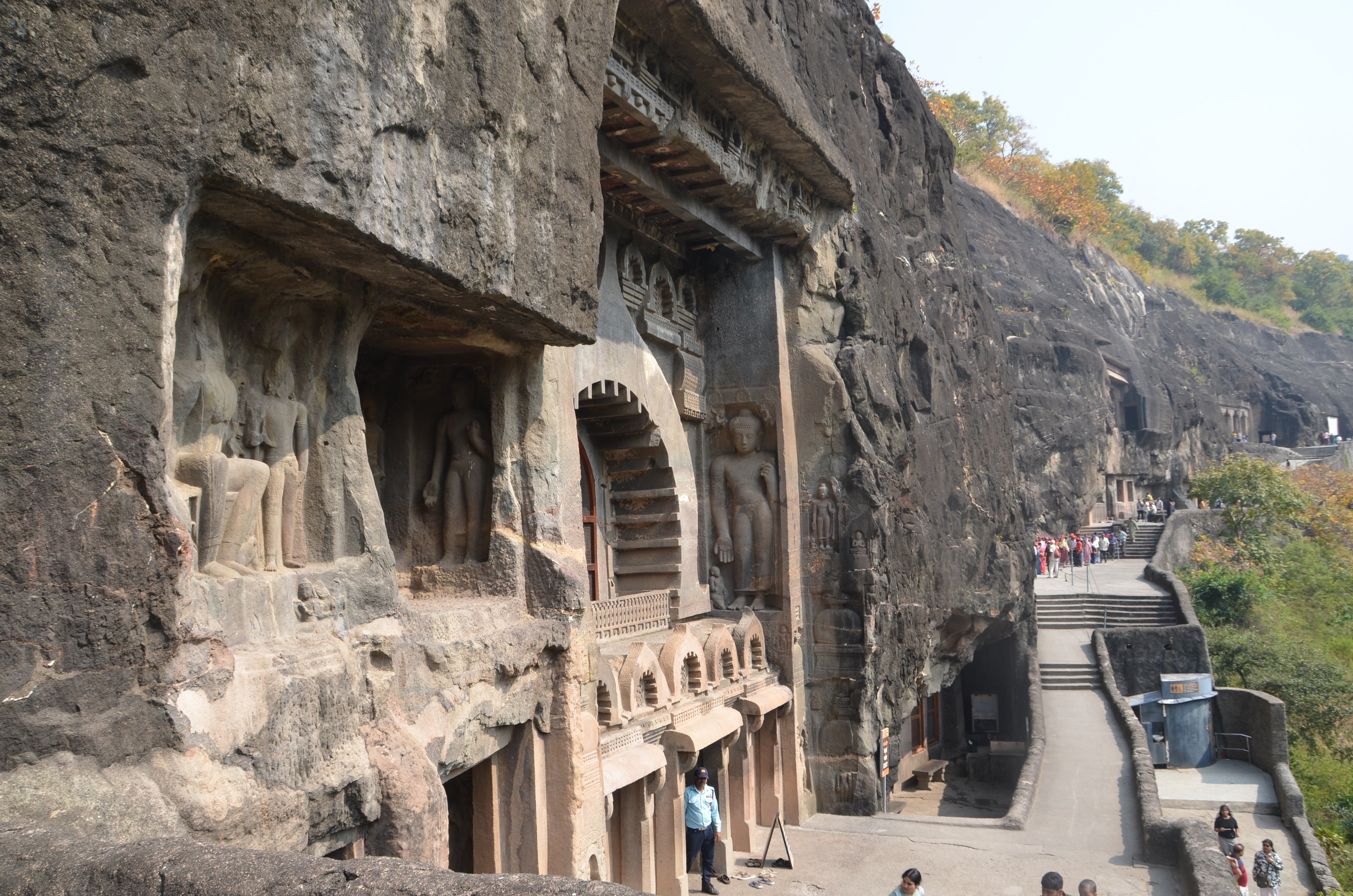
It was summer of April 1819.
Led by Captain John Smith, a group of British soldiers on a hunting spree through the thick jungles of the Western Ghat Mountains in Western India suddenly spotted a tiger disappearing into the deep canyon. Following the pug marks through the bushy terrain, they reached a horseshoe-shaped amphitheatre of rocky cliffs, shielded by thick vegetation.
Through an opening in the rock, they moved inward where darkness greeted them. They lit some dried grass as makeshift torches and found themselves standing inside an expansive hall, flanked on either side by large octagonal pillars, with a dome-shaped sculpture in the middle and colourful paintings adorning the walls and ceilings.

Over time, the cluster became widely known as Ajanta Caves and earned a reputation as the zenith of par-excellence Buddhist architecture.
The extraordinary feature of the caves, later numbered from one to 30 in sequential order, are their exquisite artworks — paintings and sculptures — which are recognised by art connoisseurs worldwide as one of the greatest artistic renditions of human civilisation.
I could not have agreed any more when I explored the caves during my recent visit to the historical city of Aurangabad in Western India, the gateway city to Ajanta, about 100km away.
Following traditional Buddhist monastic architecture, the caves were designed as either a chaitya, a place of worship, or as a vihara, where monks lived, studied, and mediated. However, both were lavishly embellished with paintings, statues, and carvings, including huge figures of Lord Buddha in different positions — sitting, standing, and sleeping.

The galaxy of Ajanta paintings mainly illustrates the life of Buddha and narrates fables from Jataka which are stories about his previous incarnations. As written by historian William Dalrymple in his newest book, The Golden Road, nowhere in this world does Buddha come more dramatically to life than in Ajanta.
Beyond Buddhist art, the other paintings showcase courtly scenes, daily lives of commoners, portraits of good-looking men and women and seductive court dancers, called apsaras. Their impressive facial expression, gesture and pose testify the creative talent of the artists of the era.
In one of the caves, Shankar drew my attention to a painting which portrayed a presence of international characters — Persians, Romans, and Egyptians — recognisable by their distinct attire, hairstyle and skin colour. That indicated India was not an isolated domain in that classical era, but already cosmopolitan through the spread of Buddhism and trade along the fabled Silk Road.
In 1983 Unesco recognised the caves’ outstanding heritage value by listing the area as a World Heritage-listed site. Simultaneously, they also included on the prestigious list another set of 34 art-filled caves, located in the same region at Ellora, 34 km outside Aurangabad.
Unlike the caves at Ajanta, which were carved into a sheer rock-face, the Ellora ones line a 2km-long ridge. They were excavated between 6th and 9th century AD, and in addition to Buddhist architecture, also include temples and monasteries associated with Jainism and Hinduism. Most people visit both Ajanta and Ellora — not to judge which one is better, but to satisfy their own artistic appetite.
From an art aficionado’s perspective, the displays at both sites draw equal admiration. While the wall paintings give Ajanta its fame, it is the huge sculptures at Ellora, particularly that of Hindu god Shiva and his wife Parvati, that command attention. One thing is for sure — the natural setting at Ajanta is much more striking than in Ellora.

Around 8th century AD, when Buddhism began weakening in India, Ajanta lost its devotion, became abandoned and remained shielded by the surrounding forest land for almost a millennium, until Smith’s accidental discovery in the 19th century. During that period the Ellora caves became prominent. Unlike the paintings and sculptures at Ajanta, which show signs of damage and deterioration due a millennium of neglect, the art at Ellora appears to have stood the test of time.
Travel notebook
Getting There: One option is to fly Qantas (www.qantas.com) from Auckland via Sydney and Bengaluru to Aurangabad.
Stay: Ambassador Ajanta Hotel, Aurangabad (www.ambassador-hotels.com) India tour operator — Check Eastbound Group (www.eastboundgroup.com) for on-ground assistance.
— Sandip Hor is an Australian travel writer.












